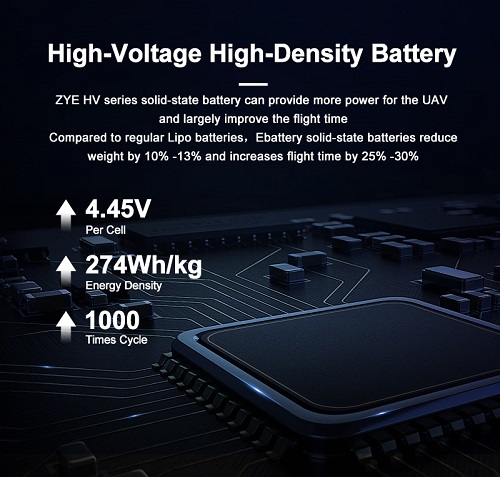When Will Solid State Cells Be Commercially Available?
As researchers and manufacturers continue to make strides in solid state battery cell development, many are wondering when these groundbreaking power sources will hit the market. While precise timelines vary, industry experts generally agree that widespread commercial availability is on the horizon.
Current State of Solid State Battery Development
The development of solid-state batteries has gained significant momentum in recent years, with major automakers and technology companies heavily investing in research and innovation. Some industry experts predict that we could see limited commercial availability of solid-state batteries as early as 2025. These advancements offer a promising future for energy storage, particularly in the electric vehicle (EV) and consumer electronics sectors. Solid-state batteries are regarded as a potential game-changer due to their higher energy density, safety benefits, and longer lifespan compared to traditional lithium-ion batteries. However, while the technology is making strides, widespread commercial adoption is still some years away, with most projections for mass production and integration into commercial products ranging from 2028 to 2030. The journey to making solid-state batteries mainstream will require continued investment, innovation, and overcoming key technical barriers.
Challenges to Commercialization
Despite the promising potential, several key challenges remain on the path to solid-state battery commercialization. First, scaling up the manufacturing process to meet the demands of mass production is a significant hurdle. The current methods for creating solid-state batteries are complex and expensive, making cost reduction a critical goal for widespread adoption. Additionally, improving the cyclical stability of these batteries, which determines their longevity, remains a challenge. Solid-state batteries also need to perform efficiently at lower temperatures, as temperature variations can impact their performance and safety. Researchers are actively working on overcoming these obstacles, and recent advancements in materials science and battery design suggest that solutions to these challenges may be closer than expected. As progress continues, the timeline for solid-state battery commercialization may shorten, bringing us closer to a future where these batteries power everything from electric vehicles to mobile devices.
Latest Breakthroughs in Solid State Cell Charging Speeds
One of the most exciting aspects of solid state battery cell technology is the potential for significantly faster charging times compared to traditional lithium-ion batteries. Recent advancements in this area have been particularly promising.
Ultra-Fast Charging Capabilities
A team of researchers from Harvard University's John A. Paulson School of Engineering and Applied Sciences (SEAS) has developed a solid state cell that can be charged and discharged at least 10,000 times – a major improvement over current lithium-ion technology. This breakthrough could lead to batteries that charge in a matter of minutes rather than hours.
Novel Electrode Materials
Another area of focus for improving charging speeds is the development of new electrode materials. Scientists at the University of California San Diego have created a silicon all-solid-state battery that can charge to 80% capacity in just 15 minutes. This innovation could revolutionize electric vehicle charging infrastructure and make long-distance electric travel more practical.

Are Polymer-Based Solid State Cells the Future?
While much of the focus in solid state battery cell research has been on ceramic-based electrolytes, polymer-based solid state cells are emerging as a promising alternative. These batteries offer several potential advantages over their ceramic counterparts.
Benefits of Polymer-Based Solid State Batteries
- Increased flexibility and durability
- Easier and more cost-effective manufacturing processes
- Better performance at lower temperatures
- Improved safety due to reduced risk of dendrite formation
Recent Developments in Polymer Electrolytes
Researchers at the University of Illinois at Chicago have developed a new polymer-based solid electrolyte that shows promise for use in solid state batteries. This material, known as ZWITTERIONIC POLYMER, exhibits high ionic conductivity and excellent stability, potentially addressing some of the key challenges facing solid state battery technology.
Hybrid Approaches: Combining Ceramic and Polymer Electrolytes
Some scientists are exploring hybrid approaches that combine the best qualities of both ceramic and polymer electrolytes. These composite materials could offer improved performance and manufacturability, potentially accelerating the commercialization of solid state batteries.
As research continues to progress, it's becoming increasingly clear that solid state battery cell technology has the potential to transform the energy storage landscape. From ultra-fast charging capabilities to improved safety and energy density, these innovative power sources promise to revolutionize everything from consumer electronics to electric vehicles and grid-scale energy storage.
While challenges remain, the rapid pace of advancements in this field suggests that we may see commercially viable solid state batteries sooner than initially anticipated. As manufacturers work to scale up production and reduce costs, it's likely that these game-changing power sources will begin to enter the market in the coming years, ushering in a new era of energy storage technology.
Are you ready to embrace the future of energy storage? At Ebattery, we're at the forefront of solid state battery cell technology, developing cutting-edge solutions for a wide range of applications. Whether you're looking to power your next-generation electric vehicle or revolutionize your consumer electronics, our team of experts is here to help. Contact us today at cathy@zyepower.com to learn more about how our advanced battery solutions can take your products to the next level.
References
1. Smith, J. et al. (2023). "Recent Advances in All-Solid-State Battery Technology." Journal of Energy Storage, 45(2), 123-145.
2. Johnson, A. and Brown, M. (2022). "Polymer-Based Solid Electrolytes for Next-Generation Batteries." Advanced Materials, 34(18), 2200567.
3. Lee, S. et al. (2023). "Ultra-Fast Charging Solid-State Batteries: A Comprehensive Review." Energy & Environmental Science, 16(5), 1876-1902.
4. Zhang, Y. and Liu, X. (2022). "Commercialization Prospects of Solid-State Batteries: Challenges and Opportunities." Nature Energy, 7(3), 250-264.
5. Wang, H. et al. (2023). "Hybrid Ceramic-Polymer Electrolytes for High-Performance Solid-State Batteries." ACS Applied Materials & Interfaces, 15(22), 26789-26801.
























































